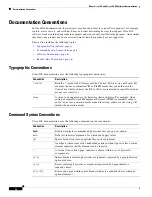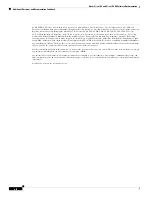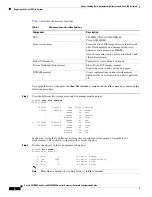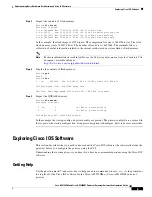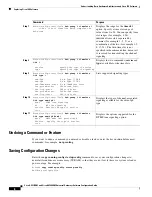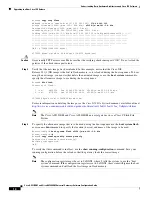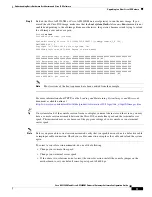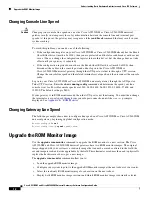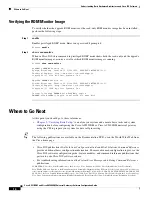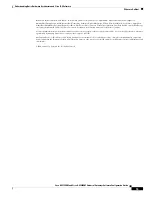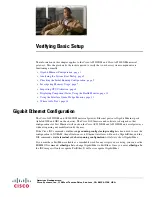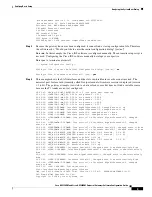
Understanding Basic Hardware Architecture and Cisco IOS Software
Exploring the Cisco IOS File System
4
Cisco AS5350XM and Cisco AS5400XM Universal Gateways Software Configuration Guide
Table 1
describes the memory locations.
To inspect the file system, enter the
show file systems
command and the
dir
command as shown in the
following procedure.
Step 1
View the different file storage areas and file management functions:
Router#
show file systems
File Systems:
Size(b) Free(b) Type Flags Prefixes
520184 520184 nvram rw nvram:
- - opaque rw null:
- - opaque rw system:
- - network rw tftp:
- - opaque wo vfc:
* 32768000 22992256 flash rw flash:
7602176 4634364 flash rw flash:
- - opaque wo lex:
- - network rw rcp:
- - network rw ftp:
In addition, verify that you have everything that you ordered (for example, 32 megabytes of
flash memory). The asterisk (
*
) indicates the current directory.
Step 2
Display the objects in the system memory directory:
Router#
dir system:
Directory of system:/
4 dr-x 0 <no date> memory
1 -rw- 5026
<no date> running-config
2 dr-x 0 <no date> ucode
14 dr-x 0 <no date> vfiles
Note
Remember to include the trailing colon (
:
) in
dir
commands.
Table 1
Memory Location Descriptions
Component
Description
CPU
750 MHz (Cisco AS5350XM and
Cisco AS5400XM)
Processor memory
Stores the Cisco IOS image after it is initially read
out of flash memory and decompressed (also
known as main memory or DRAM).
Also stores routing tables, call control blocks, and
other data structures.
Packet I/O memory
Temporarily stores packets in transit.
System flash and flash memory
Stores Cisco IOS images, modem
firmware/portware, and custom web pages.
NVRAM memory
Stores configurations in nonvolatile memory,
which retains its contents when a unit is powered
off.

